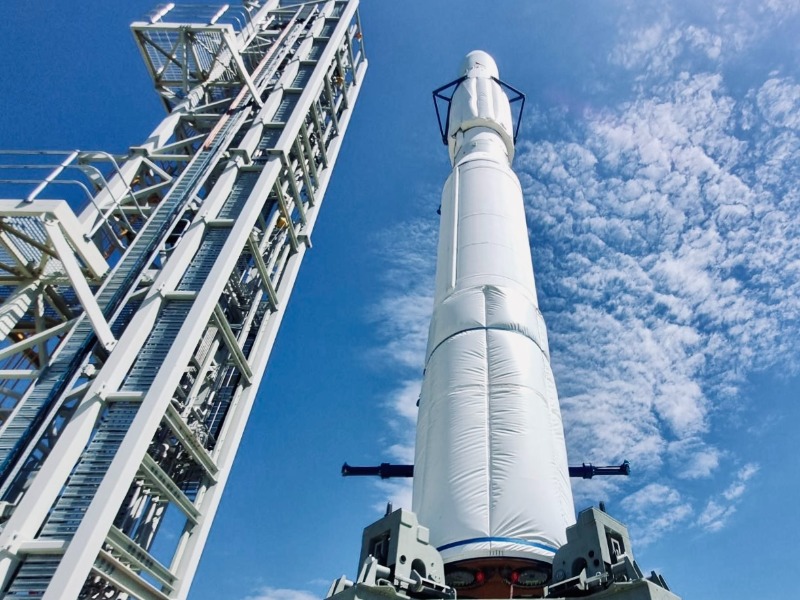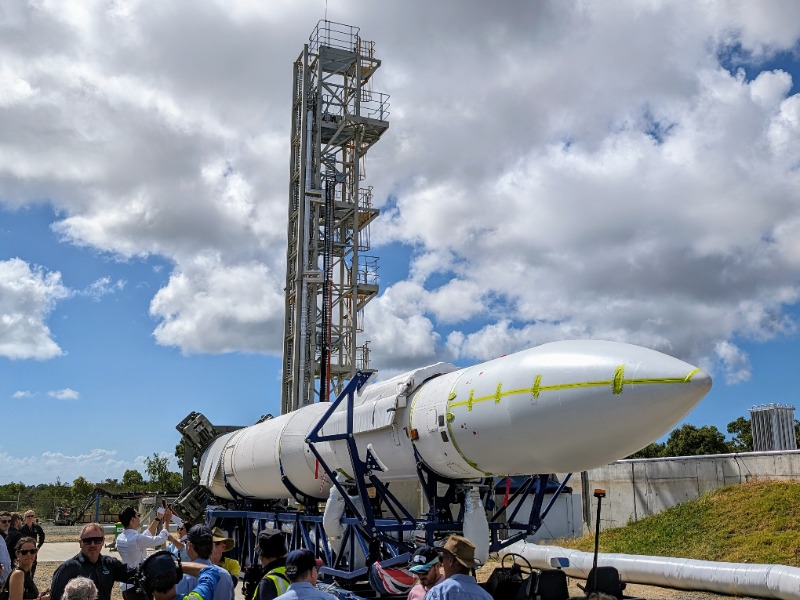The countdown toward the launch of the first Australian designed and manufactured orbital rocket remains on hold as Gilmour Space Technologies’ long wait for an official launch permit from the Australian Space Agency continues.
The launch permit is the final piece of paperwork that the company needs to press the green light on the maiden flight of Gilmour’s three-stage Eris launch vehicle. The launch is now unlikely to take place before mid-July at the earliest.
Gilmour Space Technologies’ chief executive Adam Gilmour says the company delivered some final additional documentation to the Space Agency last week and is hopeful that “within the next two to three weeks we might get a conditional permit”.
Once a launch permit is issued, the company will wait through a mandatory 30-day window during which Space Agency notifies other governments – domestic and foreign – and agencies of the impending launch.

The launch for licensing approvals has been “extremely frustrating” Adam Gilmour says, whilst acknowledging that the maiden flight is the first time for everyone, an epic “learning experience”.
For the past month, the company has doubled-down on its program of dry testing and dress-rehearsals ahead of the eventual launch day.
It has also made significant progress on building its second Eris rocket, and despite the prospect of a shortened preparatory window between the maiden flight and the second launch, Adam Gilmour still expects the second flight to take place late in the fourth quarter of 2024.
Mr Gilmour’s focus right now is on working with the Australian Space Agency to get its final approvals in place for the first launch. But he is also looking ahead to a post-launch review – with the Space Agency – of the approvals process.
His concern is that the “learning experience” of the first licencing process be streamlined and systematised for future launches and has been discussing a full review with the Space Agency once the maiden flight has taken place.
“I really just want to get this launch done and then sit down with the agency – and they have agreed to do this already – and just do a walk-through to say ‘what is the standard that should be required to approve a launch’,” Mr Gilmour said.
“This has been a learning process, so let’s make sure it’s streamlined from now on. And if we can get to that point, I am going feel a lot better [about future launches],” he said.
He said it was understandable that the Space Agency had gone above and beyond what is required by law to look in detail at some “very, very low probability cases that still sit within the bounds of the risk hazard analysis” but that with experience should settle back into abiding by “the same generic, general rules that all our allies use for launch safety.”
“If the agency just does a rinse and repeat [of this process] for other launches in future, it will ground our industry,” Mr Gilmour said. “We just won’t get launches done in Australia. It’s that bad.”
“So they have to learn from this and do better.”
Adam Gilmour has always said building products for space – especially the actual rocket technology – is super complex, and things always take longer, and cost more than you anticipate.

The frustration right now is that having been founded in 2013. Having raised $143 million in venture funding and having designed and built both a launch vehicle as well as a fully operational spaceport at Abbot Point just north of Bowen in Queensland, the final licencing hurdle is the single obstacle that remains.
The rocket has been moved to its launch pad and put into a vertical position multiple times as the company has put it through tests and dress rehearsals. It is ready to fly.
“We have just increased the testing, right? We’ve done a lot of dress rehearsal testing, a lot of system testing, and we have found a few things that weren’t working the way we wanted. So we’ve been fixing those issues.
“We haven’t totally wasted our time. Once we knew that we weren’t going to get the approval for so long, we decided to just do some extra dry.”
The company expects to conduct a series of wet-test – where the vehicle in loaded with its liquid oxides and propellants – as part of full-dress rehearsals in the coming weeks.
Do you know more? Contact James Riley via Email.

